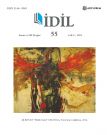СOПОСТАВИТЕЛЬНЫЙ АНАЛИЗ ГЛАГОЛОВ ДВИЖЕНИЯ В РУССКОМ ЯЗЫКЕ ПРИ ПЕРЕВОДЕ НА ТУРЕЦКИЙ ЯЗЫК
A COMPARATIVE ANALYSIS OF THE MOTION VERBS OF RUSSIAN LANGUAGE IN TURKISH TRANSLATIONS
Author(s): Jale CoşkunSubject(s): Comparative Linguistics, Eastern Slavic Languages, Translation Studies, Turkic languages
Published by: Sanat ve Dil Araştırmaları Enstitüsü
Keywords: Russian; Turkish; multidirectional verbs of motion; translation; comparative analysis;
Summary/Abstract: The article presents an analysis of the verbs of motion in the Russian language when translated into Turkish. The subject of this article is the verbs of motion in the Russian and Turkish languages. In the verbal system of the Russian language, verbs of motion take central place and are word-formative base, that’s why their exact translation into Turkish is necessary, as a result of this the subject of this article is relevant. The purpose of this study is to study and investigate the differences in the Russian and Turkish languages, to determine the diversity in the transmission of the meanings of Russian verbs of motion when translated into Turkish. In connection with the object in view, the following tasks were identified: to show that the Russian language belongs to the “verbal type” of languages. The way of movement, the direction is transmitted in it using a verb stem, to demonstrate that in Turkish language the direction can be transmitted by a verb stem, but the way of movement (running, walking, jumping, driving and other ways of movement) are transmitted by additional forms, often these are verbal adverbs. Based on the work done, we came to the conclusion: for each prefixed verb of motion in the Turkish language there is no specific verb that can always be used. Thus, a prefixed verb of the motion in Russian language is translated into Turkish depending on the context. In addition, in Turkish language the verbs of motion are not discriminated depending on the direction, the momentariness or multiplicity of action. It is difficult to list the equivalents of Russian verbs of motion in Turkish, but we can list methods and typical cases which correspond to the translation, because in the Turkish language the lexical meaning of a word can express the meaning of the verb very extensively and therefore, one verb can correspond to several Russian verbs. The results of the study of the verbs of motion in the Russian language and their translation into Turkish, presented in this article, can be used in teaching the course “Russian language grammar”, in Russian-Turkish translation departments in Turkish universities.
Journal: İdil Sanat ve Dil Dergisi
- Issue Year: 8/2019
- Issue No: 55
- Page Range: 343-347
- Page Count: 5
- Language: Russian

